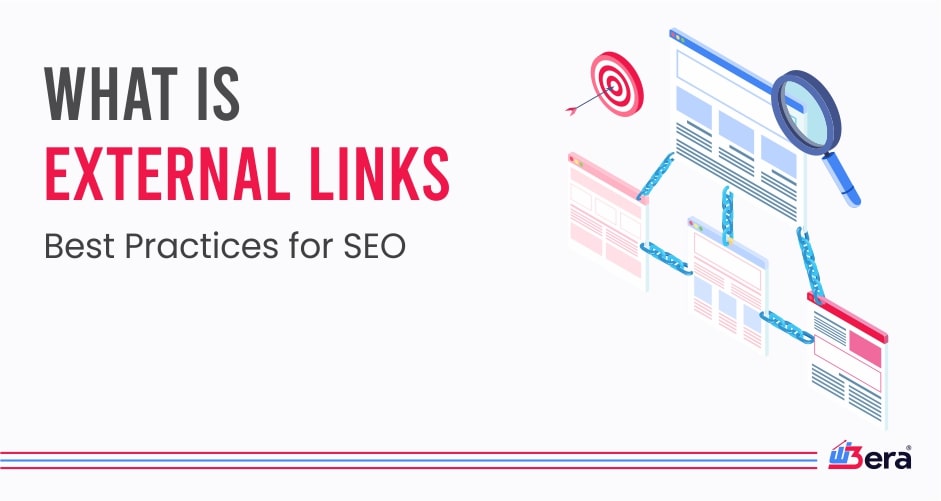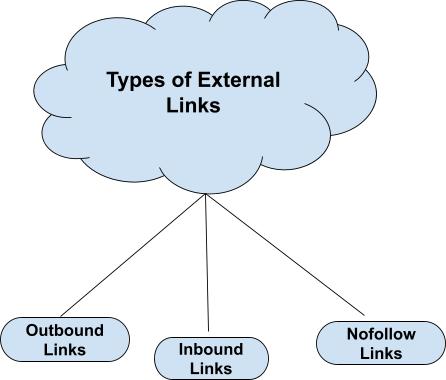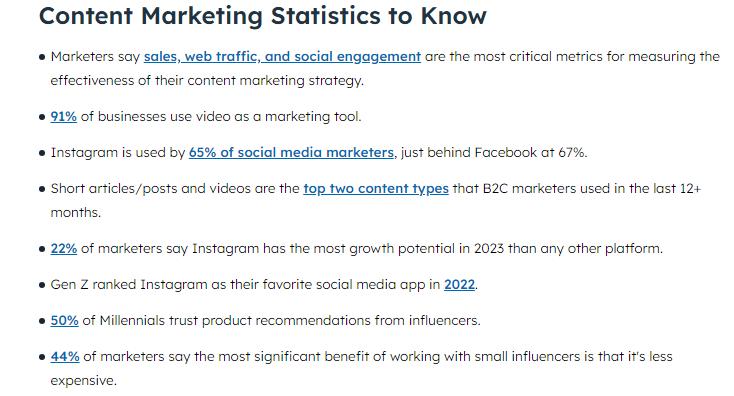Recent Posts
Subscribe To Our Newsletter
Daily Search Marketing tidbits for savvy pros.


Are you aware of the search engine optimization? The SEO world is high on backlinks or inbound links but have you thought about what is being left behind in this conversation? The answer is external links.
But Why? What is the reason for leaving it behind?
External links are often ignored as they are not always thought of as ranking factors (this is a misunderstanding). Even links to external sites happen to be the very reason that adversely affects the optimization of any search engine. So, is there any usage of external links in SEO? Yes, they do. With links to external sites, you have asserted your authority and credibility online and thus increased your online reputation with further positive results in terms of SEO.
External links are important for on-page SEO best practices. Nowadays publishers are making a mistake by not focusing on external linking as this is the pivotal part of on-page SEO. Today, in this blog, you will dive deeper into the details of external links. Some of the main headlines are:
So, what’s the wait for? Let’s move forward to explain every outline in detail.
External link is the link that helps in improving the website’s search engine optimization. Another name for the external links is outbound links which are hyperlinks leading one website to another. They can be created by copying and pasting the URL of the other web page into the text of your document, or by using a HTML <a> tag. When an external link is clicked, the web browser will open a new window or tab and load the third-party’s web page.
External links can be found in various places such as image links, text links, and anchor text. The benefit of this link is that you can place them in different parts of your web page such as the header, footer, or sidebar.
So, have you thought about why are they so important?
External linking SEO is a part of the search engine optimization strategy. External linking serves two purposes. They are mentioned below:
When a reader comes across any external link while reading the content, they may click on that link to learn more details. Come let us know about external backlinks. External backlinks are also called outbound links that help in providing links from your website to another site to make people know about additional context and resources for your audience.
Now that you have learned about what are external links, let’s proceed further with their types.
Below are mentioned the types of external links along with these external links examples:-

An outbound link is a hyperlink that leaves your site and goes to another site online. Outbound links are a key user navigation assistant, and they enhance the reputation of your site as credible and increase your potential for ranking well in the search engines because having links from other sites to yours sends a signal to the engines that they can trust the content on your site. For instance, if you are performing content writing for SEO and adding a link to a reliable source such as Google’s SEO guidelines, this is an outbound link.
An inbound link is another term to describe backlinks, links from other websites to your website. Indeed, inbound links can be a strong ranking factor for search engines, because they indicate that other sites find your content valuable. The more high-quality inbound links you have, the more authority and visibility your website gains. Typically, whenever a popular tech blog writes an article about your software and links to your product page, this is an inbound link.
Nofollow links are outgoing links with a “nofollow” attribute, which transmits a message to the search engines not to pass on any SEO value or “link juice” to the site that has been hyperlinked. Though nofollow links do not immediately and directly support ranking, they are still of value in terms of traffic generation and general brand awareness. For example, a link provided in the blog comment section would often have the “nofollow” tag in order not to gain any SEO advantage.
The best practices for external linking are mentioned below:-
Making the relevant links is one of the best practices for external linking. Do remember that whenever you are adding links don’t add it just for the sake of it instead add that can take the readers to the relevant content. You can link infographics, statistics, images, and videos to reach the relevant audience. Many search engines including Google help users solve their query by posting a relevant link. Google being the most popular search engine understands the relationship between readers and content to make a higher SERP ranking.
When you link out, do it responsibly and point readers towards credible sources. This will help make less problematic material appear in front of your readers when they click on outgoing links. You will also harm the trust you build with your reader. It may also negatively impact how search engines rank your content.
If you have to link to websites whose content is not trusted use the no-follow tag. The no-follow tag will be a signal to the search engine crawlers that the page you link to isn’t connected to your page. For example:

Image Source: Hubspot
Anchor text refers to the clickable text in a hyperlink. It should be relevant and descriptive, so the users know what to expect if they click the link. Avoid anchor text like “click here” or “read more.” Replace it with keywords or phrases that describe the link destination. For example, don’t use “Click here for SEO tips”, you can use “Learn more about SEO best practices”.
External links may be used to give value to your reader. Therefore, it should direct the audience toward some relevant and credible source. Use links that give more context or other resources to your content. For instance, by giving a link to the guide on content marketing strategy, more information is given to the reader.
Always make sure that your external links open up on different tabs. There are many reasons behind this. This helps users to stay on your website for a longer period and by staying on your page it can increase your site’s SEO ranking.
If you want to conduct a link audit you have to spend some time on your website to audit your content for any broken or outdated links. Are you aware of the fact that it is important to conduct a link audit? Don’t worry, let us give you a brief on it. You can also make use of the tool such as check my links to find out the broken links available on your website.
The benefits of external links are described in the form of infographic below:-

Below are the common mistakes that you should avoid in external linking:-
Using plenty of external links has become one of the most common mistakes that can always harm the SEO of your site. Google, on the other hand, prefers very few but highly relevant links that are relevant to the content on your site. Such irrelevant or low-quality links generally hurt your site’s credibility even though a large volume of such links may be produced. It is always better to have fewer good links that can give your audience some value rather than having numerous low-value links.
Anchor text over-optimization with exact match keywords is another common mistake. Such a tactic can alarm search engines and incur penalties for keyword stuffing on that page. Use the natural, varied anchor text and aim at branded, descriptive, and generic phrases, thereby keeping your linking profile organic and user-friendly.
The relevance of the websites you link to truly makes a difference in SEO and user experience. You are linking to unrelated or low-authority websites that take a toll on your rankings and your credibility, accordingly. It’s always good practice to link to relevant websites that add value to your readers.
There is an instinct to avoid reciprocal links or link exchanges, where two sites agree to link to each other. Such linking can look manipulative to search engines. Some amount of reciprocal linking is normal, but too much of it can get your links devalued by the search engines, which would mean that their effectiveness in SEO would be reduced.
Pages that have no external links are less resourceful or handy for a visitor to click on compared to pages that have links in them. Links that go to related high-quality sources improve the user experience about your page by giving visitors several choices to read more, and search engines regard this as a good indication of a well-researched page.
A hidden link is a link that is hidden within the code of HTML so it cannot be detected. In reality, it is one of the black-hat SEO techniques. Search engines do punish any website for using hidden links to manipulate their rankings. Always ensure your external links are visible and lead to a clear user purpose.
Overloading a page with too many external links may overwhelm users and reduce the value of the available links. The right approach, instead is to link to a few highly authoritative and relevant external resources that support your content rather than bombarding your users with too many options.
You may severely damage your efforts in SEO by linking to low-quality or even spammy sites. The type of linking will have search engines deeming your site undesirable or untrustworthy, resulting in a lower rank and the worst penalty. Be sure it is only the high-quality and relevant sites that link to you.
A few marketers believe that the “nofollow” links have no value and would skip over them, but even nofollow links could bring traffic, increase brand awareness, and have an organic backlink profile, so that is a missed opportunity.
Without monitoring backlinks you may encounter problems in links breaking or dangerous backlinks that could harm your page ranking, and valuable links get wasted. By monitoring and periodically auditing your backlink profile, you can maintain a healthy link portfolio that supports your SEO effort.
Broken external links result in poor user experience and lower your SEO. A broken link suggests that a web page is not up-to-date or updated regularly and usually serves as a warning sign for search engines that your website may be stagnant or not being maintained properly. Thus, regularly keep an eye on your links with a broken links checker.
Hope this blog finds you well. Having intense knowledge about external linking can be a game changer for you. Adding external links to your website can increase the overall SEO performance and heighten the experience of the audience. Third-party sites often switch their URL systems. And if you’re not using redirects, broken links on your website can start impacting your search rankings sooner than you would think.
We, at W3era, a digital marketing agency provide you with all the best link-building services you need related to digital marketing such as SEO, SMM, GMB, etc. Stay in touch with us to know about your website audits in detail.